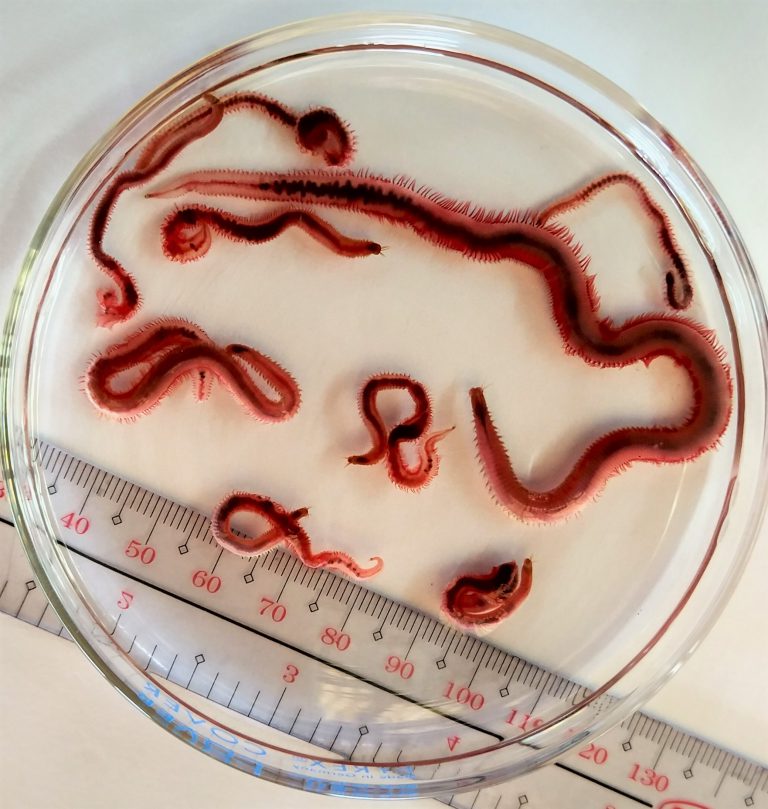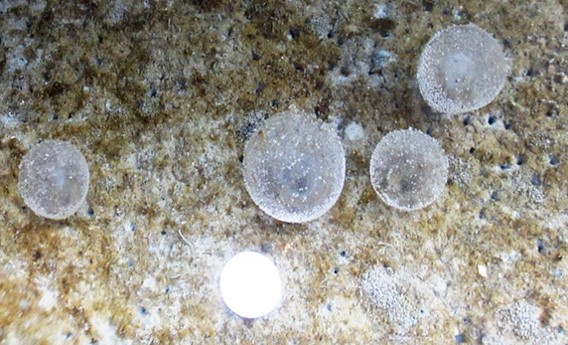
A newly discovered mud cleaner worm species found in Iloilo in the Western Visayas islands have been found to have good environmental impact for cleaning coastal and fishpond areas as well as having potential for an economical and sustainable food source for crab and shrimp breeders and farmers.
The mud-worm species was identified and named after Iloilo with the scientific name of Marphysa iloiloensis.
The mud cleaner worm was accepted as a new species of the sanguinea-group Quatrefages of 1866 (Annelida: Eunicidae: Marphysa ) from the Philippines in the September 2019 listing of the World Register of Marine Species (WoRMS) after it was confirmed distinct from other mudworms with help from Australian taxonomist Dr. Christopher Glasby and his team.
Locally referred to as ulo-ulod, the mudworm eggs were collected and hatched by Mary Anne Mandario, an Ilongga graduate of the University of the Philippines Visayas and an associate researcher of the Southeast Asian Fisheries Development Center (SEAFDEC).
A SEAFDEC report said the eggs collected were encapsulated in what looked like a “jelly cocoons” and was taken from SEAFDEC’s fishponds in Dumangas and transported them to SEAFDEC’s Polychaete Hatchery in Tigbauan where they were hatched and grown to adult size.
The mud worm became the subject of a study by Mandario for mass production because of their potential as supplemental diet for shrimp and crab breeders.
She has been researching and studying these mud worms, which are commonly found in fishponds and coastal mangrove wetlands, for their ability to eat decomposed feeds from aquaculture and as potential food for crab and shrimp breeders as well.

“Several studies have shown that polychaetes (marine worms) when used as feed could improve the reproductive performance of crustacean broodstock,”she said.
Mandario is currently developing a mass production technique for M. iloiloensis at SEAFDEC that hopes to promote their use as supplemental diet for shrimp and crab breeders.
Mandario added that the development of a reliable culture technique for this species will lessen dependence on wild stocks as well as attain a disease-free and sustainable supply of mudworm for aquaculture use.
SEAFDEC Aquaculture Department chief Dan Baliao said, “This is a promising study that could help boost the production of healthy crablets and shrimp postlarvae and at the same time help clean the culture environment.”
The Philippines’ biodiversity has brought forth various researches that explored flora and fauna for their environmental and medicinal values. Among the recent promising Filipino researches are: fern that may help remove mining contaminants from the soil, the world’s first anti-dengue medicine culled from several local flora, and seaweed found to have anti-cancer properties.
SEND CONGRATULATIONS to the people of Iloilo and Filipino science researcher Mary Anne Mandario for this milestone discovery and its impact on the environment and aquaculture!
Want to know how to be a Proud Pinoy? Like, Follow, Subscribe to GoodNewsPilipinas.com and our socials Facebook, Twitter, Instagram, Good News Pilipinas! TV on YouTube, for new story notifications and e-mail newsletters for updates on more Filipino Pride stories.










